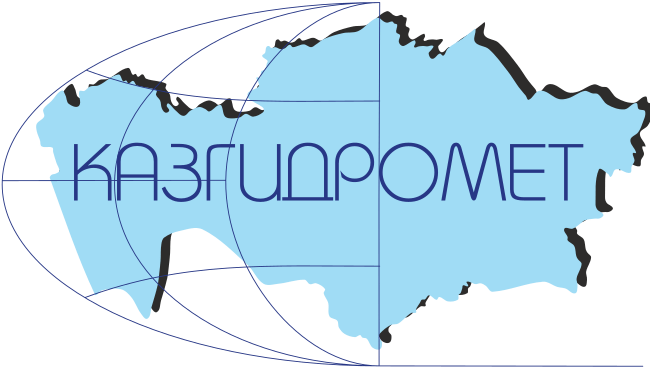ASSESSMENT OF ECOSYSTEM DAMAGE AND RECOVERY IN THE «SEMEY-ORMANY» RESERVE AFTER THE CATASTROPHIC 2023 WILDFIRE BASED ON REMOTE SENSING DATA
DOI:
https://doi.org/10.54668/2789-6323-2025-118-3-141-151Keywords:
remote sensing, wildfires, vegetation indices, ecosystem recoveryAbstract
The catastrophic wildfire that occurred on June 8, 2023, in the State Forest Nature Reserve «Semey-Ormany» affected over 60,000 hectares of forest and steppe ecosystems in the Abai Region, causing unprecedented destruction. The aim of this study is to assess the damage and monitor the ecosystem’s recovery during the year following the fire using Landsat remote sensing data and the calculation of vegetation indices such as NDVI, NBR, dNBR, and NDMI. The analysis of the time series of satellite imagery from May 2023 to July 2024 allowed for the identification of burn areas, assessment of fire severity, and observation of the initial stages of regeneration. The results revealed a sharp decline in NDVI and NBR values, accompanied by persistently low NDMI values, indicating degradation of the ecosystem’s moisture retention capacity. Despite partial recovery of the herbaceous cover, a full return to pre-fire conditions will require decades, especially under the region’s arid climatic conditions. The findings emphasize the value of integrating GIS and remote sensing technologies for assessing the impacts of natural disturbances and highlight their applicability in ecological monitoring and management systems of protected natural areas.
References
Liu C-L, Wang Y-R and Liu W-Y (2025) Multi-index remote sensing for post-fire damage assessment: accuracy, carbon loss, and conservation implications. Front. For. Glob. Change. 8:1577612. doi: 10.3389/ffgc.2025.1577612
Shogelova, N. ., & Sartin, S. . (2023). Earth remote sensing application for forest fire size, burn state and fire recovery. Engineering Journal of Satbayev University, 145(3), 31–39. https://doi.org/10.51301/ejsu.2023.i3.05
Santos, S. M. B. d., Bento-Gonçalves, A., Franca-Rocha, W., & Baptista, G. (2020). Assessment of Burned Forest Area Severity and Postfire Regrowth in Chapada Diamantina National Park (Bahia, Brazil) Using dNBR and RdNBR Spectral Indices. Geosciences, 10(3), 106. https://doi.org/10.3390/geosciences10030106
Zhou, G., Eisenhauer, N., Du, Z., Lucas‐Borja, M., Zhai, K., Berdugo, M., Duan, H., Wu, H., Liu, S., Revillini, D., Sáez-Sandino, T., Chai, H., Zhou, X., & Delgado‐Baquerizo, M. (2025). Fire-driven disruptions of global soil biochemical relationships. Nature Communications, 16. https://doi.org/10.1038/s41467-025-56598-z.
Sentinel Asia. (2023, June 8). Forest fire in Kazakhstan on 08 June, 2023. Retrieved July 9, 2025, from https://sentinel-asia.org/EO/2023/article20230608KZ.html
N.Shogelova, & S. Sartin. (2021). Remote sensing in urban forestry: recent applications and future directions on the example of world experience. Journal of Geography and Environmental Management, 63(4), 4–14. https://doi.org/10.26577/JGEM.2021.v63.i4.01
Toleubekova Zh., Shogelova N., Shults R., Tatarincev L. Organization of forest fund use: from monitoring to sustainable forest model use // Sustainable Development of Mountain Territories. – 2025. – T. 17. – № 1. – S. 266–281. DOI: 10.21177/1998-4502-2025-17-1-266-281.
Morresi, D., Vitali, A., Urbinati, C., & Garbarino, M. (2019). Forest Spectral Recovery and Regeneration Dynamics in Stand-Replacing Wildfires of Central Apennines Derived from Landsat Time Series. Remote Sensing, 11(3), 308. https://doi.org/10.3390/rs11030308
Tienaho, N., Wittke, S., Yrttimaa, T., Kivimäki, A., Puttonen, E., Saarinen, N., & Vastaranta, M. (2025). Examining low-intensity surface fires in boreal forests using sentinel-2 time series and bitemporal terrestrial laser scanning. Scandinavian Journal of Forest Research, 40, 29 - 40. https://doi.org/10.1080/02827581.2025.2457469.
Siqueira, R., Moquedace, C., Silva, L., De Oliveira, M., De Barros Cruz, G., Francelino, M., Schaefer, C., & Fernandes-Filho, E. (2025). Do finer-resolution sensors better discriminate burnt areas? A case study with MODIS, Landsat-8 and Sentinel-2 spectral indices for the Pantanal 2020 wildfire detection. International Journal of Remote Sensing, 46, 3968 - 3991. https://doi.org/10.1080/01431161.2025.2496000.
Delcourt, C., Combee, A., Izbicki, B., Mack, M., Maximov, T., Petrov, R., Rogers, B., Scholten, R., Shestakova, T., Wees, D., & Veraverbeke, S. (2021). Evaluating the Differenced Normalized Burn Ratio for Assessing Fire Severity Using Sentinel-2 Imagery in Northeast Siberian Larch Forests. Remote. Sens., 13, 2311. https://doi.org/10.5194/EGUSPHERE-EGU21-2518.
Rossetti, I., Calderisi, G., Cogoni, D., & Fenu, G. (2024). Post-Fire Vegetation (Non-)Recovery across the Edges of a Wildfire: An Unexplored Theme. Fire. https://doi.org/10.3390/fire7070250.
Alegria, C. (2022). Vegetation Monitoring and Post-Fire Recovery: A Case Study in the Centre Inland of Portu-gal. Sustainability. https://doi.org/10.3390/su141912698.
Hao, B., Xu, X., Wu, F., & Tan, L. (2022). Long-Term Effects of Fire Severity and Climatic Factors on Post-Forest-Fire Vegetation Recovery. Forests. https://doi.org/10.3390/f13060883.
Bright, B.C., Hudak, A.T., Kennedy, R.E. et al. Examining post-fire vegetation recovery with Landsat time series analysis in three western North American forest types. fire ecol 15, 8 (2019). https://doi.org/10.1186/s42408-018-0021-9
Chu, T., & Guo, X. (2014). Remote Sensing Techniques in Monitoring Post-Fire Effects and Patterns of Forest Recovery in Boreal Forest Regions: A Review. Remote Sensing, 6(1), 470-520. https://doi.org/10.3390/rs6010470
Guo, M., Li, J., Yu, F., Yin, S., Huang, S., & Wen, L. (2021). Estimation of post-fire vegetation recovery in boreal forests using solar-induced chlorophyll fluorescence (SIF) data. International Journal of Wildland Fire, 30(5), 365–377. https://doi.org/10.1071/WF20162
Shogelova N., Sartin S., & Toleubekova Zh. (2025). Analysis of vegetation data from the quarters of the "Dalneye" forestry district. Journal of Geography and Environmental Management, 77(2). https://doi.org/10.26577/JGEM20257726
Ponomarev, E., Masyagina, O., Litvintsev, K., Ponomareva, T., Shvetsov, E., & Finnikov, K. (2020). The Effect of Post-Fire Disturbances on a Seasonally Thawed Layer in the Permafrost Larch Forests of Central Siberia. Forests. https://doi.org/10.3390/f11080790.
Xu, H., Chen, H., Chen, D., Wang, Y., Yue, X., He, B., Guo, L., Yuan, W., Zhong, Z., Huang, L., Zheng, F., Li, T., & He, X. (2024). Global patterns and drivers of post-fire vegetation productivity recovery. Nature Geoscience. https://doi.org/10.1038/s41561-024-01520-3.
Mohamed, A., & Kimura, R. (2014). Applying the Moisture Availability Index (NTDI) over Vegetated Land in Central Asia: Mongolian Steppe. Journal of Water Resource and Protection, 06, 1335-1343. https://doi.org/10.4236/JWARP.2014.614123.
Liu, Y., Wu, C., Jia, R., & Huang, J. (2018). An overview of the influence of atmospheric circulation on the climate in arid and semi-arid region of Central and East Asia. Science China Earth Sciences, 61, 1183-1194. https://doi.org/10.1007/s11430-017-9202-1.
Downloads
Published
How to Cite
Issue
Section
License
Copyright (c) 2025 Назым Шогелова, Сергей Сартин

This work is licensed under a Creative Commons Attribution-NonCommercial 4.0 International License.





